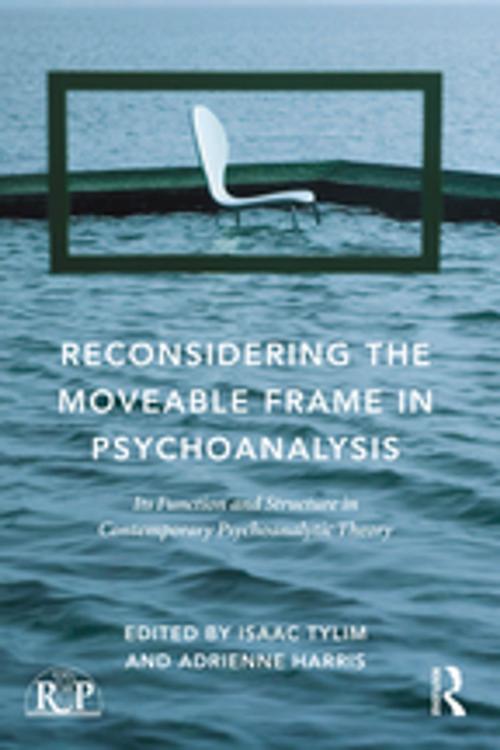Reconsidering the Moveable Frame in Psychoanalysis
Its Function and Structure in Contemporary Psychoanalytic Theory
Nonfiction, Health & Well Being, Psychology, Psychoanalysis, Mental Health| Author: | ISBN: | 9781317373148 | |
| Publisher: | Taylor and Francis | Publication: | September 14, 2017 |
| Imprint: | Routledge | Language: | English |
| Author: | |
| ISBN: | 9781317373148 |
| Publisher: | Taylor and Francis |
| Publication: | September 14, 2017 |
| Imprint: | Routledge |
| Language: | English |
Reconsidering the Moveable Frame in Psychoanalysis explores the idea of ‘the frame’ at a time when this concept is undergoing both systematic revival and widespread transformation. It has always been tempting to see the frame as a relatively static, finite and definable feature of psychoanalytic work. At its most basic, the frame establishes agreed upon conditions of undertaking psychoanalytic work. But as this book shows, the frame has taken on a protean quality. It is sometimes a source of stability and sometimes a site of ethical regulation or discipline. It can be a place of imaginative mobility, and in certain analytic hands, a device for psychic work on projections and disavowals.
Beginning with a seminal essay on the frame by José Bleger, this book includes commentary on that work and proceeds to explorations of the frame across different psychoanalytic theories. The frame is perhaps one of the spots in psychoanalysis where psyche and world come into contact, a place where the psychoanalytic project is both protected and challenged. Inevitably, extra-transferential forces intrude onto the psychoanalytic frame, rendering it flexible and fluid. Psychoanalysts and analysands, supervisors and candidates are relying increasingly on virtual communication, a development that has effected significant revisions of the classical psychoanalytic frame. This book presents a dialogue among distinct and different voices. It re-examines the state and status of the frame, searching for its limits and sifting through its unexpected contents whilst expanding upon the meaning, purview and state of the frame.
Reconsidering the Moveable Frame in Psychoanalysis will appeal to all psychoanalysts and psychoanalytic psychotherapists interested in how best to understand the frame and to use it most effectively in their clinical practice.
Reconsidering the Moveable Frame in Psychoanalysis explores the idea of ‘the frame’ at a time when this concept is undergoing both systematic revival and widespread transformation. It has always been tempting to see the frame as a relatively static, finite and definable feature of psychoanalytic work. At its most basic, the frame establishes agreed upon conditions of undertaking psychoanalytic work. But as this book shows, the frame has taken on a protean quality. It is sometimes a source of stability and sometimes a site of ethical regulation or discipline. It can be a place of imaginative mobility, and in certain analytic hands, a device for psychic work on projections and disavowals.
Beginning with a seminal essay on the frame by José Bleger, this book includes commentary on that work and proceeds to explorations of the frame across different psychoanalytic theories. The frame is perhaps one of the spots in psychoanalysis where psyche and world come into contact, a place where the psychoanalytic project is both protected and challenged. Inevitably, extra-transferential forces intrude onto the psychoanalytic frame, rendering it flexible and fluid. Psychoanalysts and analysands, supervisors and candidates are relying increasingly on virtual communication, a development that has effected significant revisions of the classical psychoanalytic frame. This book presents a dialogue among distinct and different voices. It re-examines the state and status of the frame, searching for its limits and sifting through its unexpected contents whilst expanding upon the meaning, purview and state of the frame.
Reconsidering the Moveable Frame in Psychoanalysis will appeal to all psychoanalysts and psychoanalytic psychotherapists interested in how best to understand the frame and to use it most effectively in their clinical practice.















